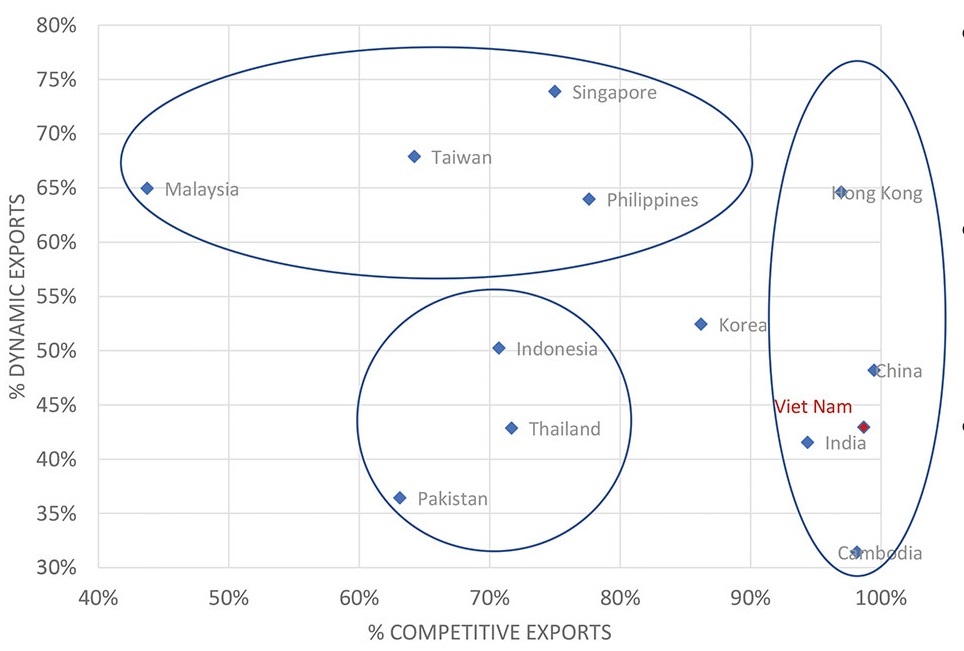INTERNATIONAL INVESTMENT
AND PORTAL
The relationship between the growth of domestic content of exports and other output growth is quite close. Balance of payments constraint and economic growth are based on numerous factors. Countries need dollars to pay for essential imports and to meet payments obligations associated with interest payments on debt and profits of foreign companies. Countries receive dollars for their net exports, profits from or interest on assets held abroad, remittances, inward investment, and foreign borrowing.
Foreign borrowing and inward investment give rise to new dollar liabilities. Dollar-constrained countries need to raise interest rates to attract borrowing, which slows economic growth. If the supply of dollars is insufficient, the government and monetary authorities may need to curtail demand and/or devalue the currency to reduce imports. But currency devaluation makes it hard to pay dollar debt with local currency earnings.
 Johnathan Pincus-Senior economist UN Development Programme
Johnathan Pincus-Senior economist UN Development Programme
Export growth equal to or greater than import growth is needed to sustain economic growth. Relevant factors are relative prices of imports and exports, price elasticities, rate of growth of domestic and foreign income, and income elasticity of demand for imports and exports.
The country’s exports and imports will affect the sustainable rate of growth. Countries with a high-income elasticity of demand for imports will tend to grow more slowly (imports of fuel and consumer goods). Countries with a high-income elasticity of demand for exports will grow more quickly (exporters of manufactured goods, ores, and metals, high-value agricultural commodities).
Looking at competitive and dynamic exports in Asia (see chart), we can see that Asian markets fall into a couple of different groups. Hypercompetitive economies are Hong Kong, China, Vietnam, India, and Cambodia. The most dynamic ones are Singapore, Taiwan, and Malaysia. Economies that struggle include Indonesia, Thailand, and Pakistan.
Everything that hypercompetitive economies export has increased market share, including footwear, telecoms, mobile phone, assembly, electronics, assembly, furniture, and garments. Everything that Vietnam exported, over the past 20-year period, has become more competitive in the global market.
Vietnam is very competitive. Everything the country is producing is increasing its share of the global market, but it’s not producing many dynamic commodities.

In some Asian countries, when we look at their competitive and dynamic commodities, we only have one data point for Vietnam. Telecoms equipment and mobile phones are both Vietnam’s most dynamic export and also its most competitive export. In some other countries, this has changed over time; 25 years ago, China’s most competitive commodity was toys and it is now telecoms. In Malaysia, computer equipment and transistors have moved up. There has been a shift in the main competitive and dynamic commodities of these Asian countries.
There is a positive relationship between how much trade is competitive and how much is dynamic. These things are closely related to GDP growth. It matters that commodities are competitive, and it also matters that they are dynamic. The regression suggests that a 1 per cent increase in the competitive export share increases the rate of GDP growth by 0.37 per cent. And a 1 per cent increase in the dynamic export share increases the GDP growth rate by 0.45 per cent. The price competitiveness of exports is important, and the goods that a country exports is also important.
Exports are not only closely related to economic growth, but also closely related to equality. If we plot the relationship between the growth of exports, particularly the growth of manufactured exports, and the income share of the bottom 40 per cent of the population, there is a predictable and close relationship between these two things. So one of the reasons that Vietnam has remained strong is income growth.
Among the bottom 40 per cent of the population, according to household surveys, is the very rapid growth of manufactured exports. So, exports matter not only because if export growth is rapid, economic growth is rapid; but also if export growth is rapid. It has an equalising effect on income distribution because it increases the incomes of the population in the bottom 40 per cent.
 Textile enterprises face difficulties in 2023
Textile enterprises face difficulties in 2023
The economic downturn and high inflation in many major export markets exerts difficulties on Vietnam’s textile exporters for 2023.
 Wood manufacturers on alert for unpredictable new year prospects
Wood manufacturers on alert for unpredictable new year prospects
While the United States is nearing a stance on imported wood that will affect Vietnam, domestic producers are being urged to modernise to survive.
 The Philippines assists in reducing hurdles for Vietnam's cement exports
The Philippines assists in reducing hurdles for Vietnam's cement exports
An agreement to export cement and clinker to the Philippines is a bright spot for the Vietnamese cement industry's demand-supply mismatch.
By Johnathan Pincus



















